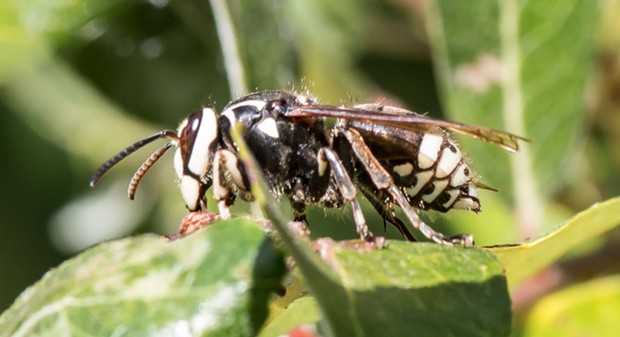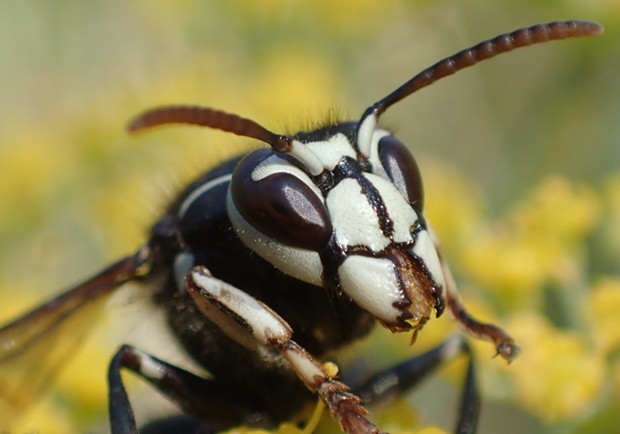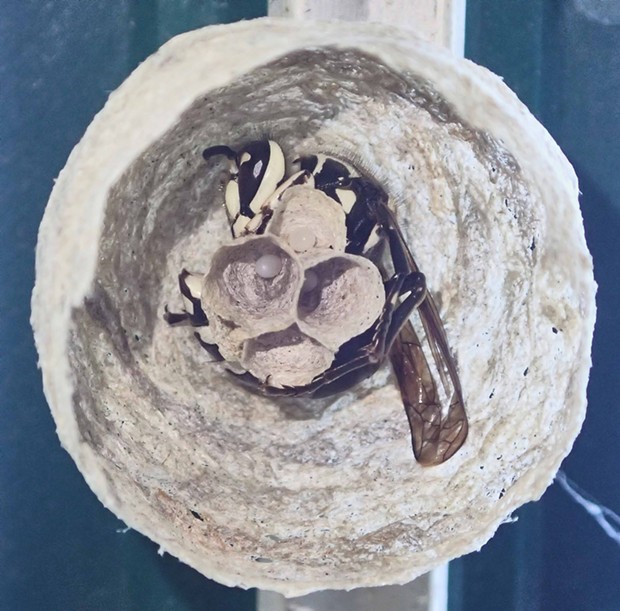HumBug Online

- Photo by Anthony Westkamper
- A profile shot of a worker bald faced hornet.
I decided to devote this week's contribution to a single unpopular species. Known for its large size, aggressive behavior and powerful sting, the bald faced hornet (Dolichovespula maculata) is liked by few people. They're neither completely bald faced nor technically hornets. Their white faces are sparsely covered with setae (hairs) and they are, in fact, the largest member of the yellow jacket clade of wasps.
When I spotted one building a slender, gray stalactite from the ridge of my greenhouse, I knew it was preparing to build a nest. Instead of reaching for the wasp killer, I reached for a camera. I really wanted to find where she was gnawing the wood she ground into a pulp to build her nest. I was going to stain some paper with food coloring and try to get her to build a multi colored hive. Sadly, I never found the source of her building materials.

- Photo by Anthony Westkamper
- This worker let me get that close with no mishaps.

- Photo by Anthony Westkamper
- A bald faced hornet prepares a fly for transport to her hive to feed the babies.

- Photo by Anthony Westkamper
- The first four cells of her nest, each containing a single egg.
If one starts to build her nest nearby and you spot it before the first generation of workers hatches, watch for her to leave to gather wood or feed herself, and knock it down. Then leave for a while. Most likely she will get the message and move on.
Comments (2)
Showing 1-2 of 2